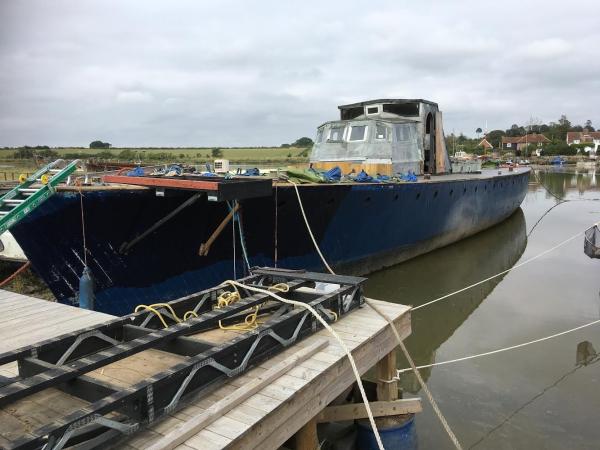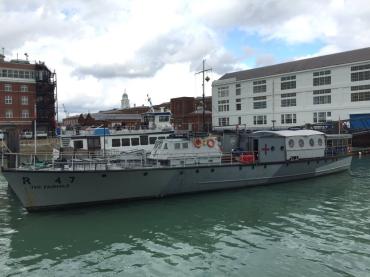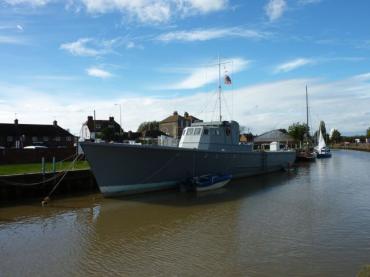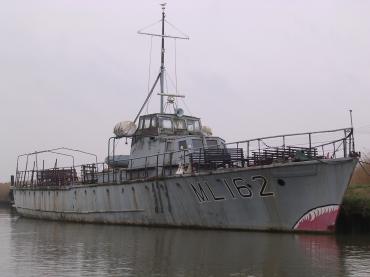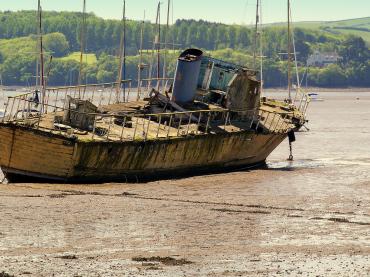

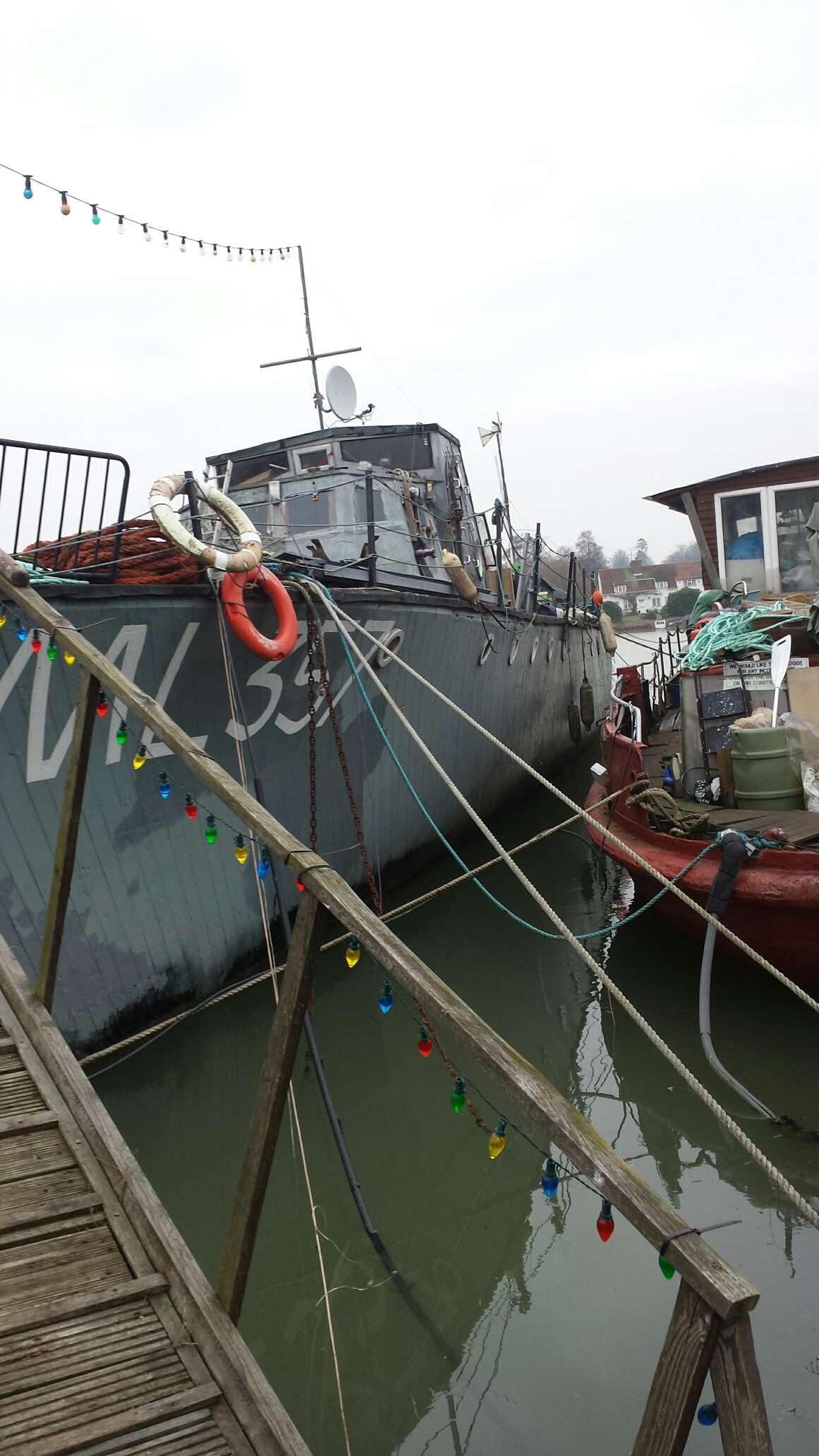
Previous names
- 1961 Jamaican Moon
Details
Construction
Dimensions
History
ML 357 is a Fairmile launch of Iroko double diagonal construction built in Cairo, Egypt in 1943. Commissioned by the Royal Navy for active service in the Eastern Mediterranean during the Second World War, ML 357 was launched in Cairo, Egypt in 1942. Based at Alexandria, between 1942 -1945, ML 357 is of clear international significance, with a rich wartime history. Her role included many operations in the Aegean and Eastern Mediterranean, as well as the liberation of Italian and German occupied Greek Islands. Some of the operations were with the SAS (Special Air Service) and SBS (Special Boat Service) and were clandestine, including the landing of SAS Commandos at Kastellorizo under Operation “Gander”. She was also the first boat to enter the Aegean harbour of Piraeus in October 1944 for the liberation of Athens.
The vessel’s primary function was as a fighting craft however, with the change of use to a private houseboat, her engines and armour were removed. Whilst her internal layout also altered considerably at this time, she retains her original swooping lines and the curved profile of her hull, thus remaining visually pleasing in shape and scale. Currently moored in St Osyth, Essex, it is intended that the vessel will remain as a static houseboat, but that her heritage will be retained and provide a clear record of her past for visitors to experience.
Significance
ML 357 – Statement of Significance
What is the vessel’s ability to demonstrate history in her physical fabric?
Evidence for designs, functions, techniques, processes, styles, customs and habits or uses and associations in relation to events and people. How early, intact or rare these features are may impact on significance.
Produced by Fairmile Marine, the boat is a timber-built “Type B”; one of a class of large 112ft (34m) multi-purpose Motor Launches designed for rapid wartime fabrication. As one of the first truly “flat-packed” boats, plywood frame kits were despatched from Surrey to British and allied boatyards all over the world, to be “double-diagonally” planked in locally available timbers (ML 357 is skinned in mahogany). Due to their relatively fragile construction, MLs were easily damaged in action and the Royal Navy deemed them “disposable”, with a life expectancy of only five years; thus making ML 357 a rare survivor.
ML 357’s original armour and engines were removed by the Royal Navy at the time of decommissioning. Subsequently, as a private houseboat, she lost many of her original fixtures and fittings with her bulkheads cut through to create accessways, thus rendering the boat structurally unsound for the sea. However, much of the original hull, deck, external and interior appearance has remained remarkably intact. Recent work to stabilise the vessel has included the addition of internal support beams underneath the original wheelhouse and raised engine-room roof, repairing and bracing of all original internal plywood frames and the fitting of a removable timber panelled floor (over retained and repaired framing) to ensure emergency bilge and internal hull access throughout the boat.
What are the vessel’s associational links for which there is no physical evidence?
Associations with people or places. Off-ship research.
Commissioned by the Royal Navy for active service in the Eastern Mediterranean during the Second World War, ML 357 was launched in Cairo, Egypt in 1942. Based at Alexandria, between 1942 -1945, ML 357 is of clear international significance, with a rich wartime history. Her role included many operations in the Aegean and Eastern Mediterranean, as well as the liberation of Italian and German occupied Greek Islands. Some of the operations were with the SAS (Special Air Service) and SBS (Special Boat Service) and were clandestine, including the landing of SAS Commandos at Kastellorizo under Operation “Gander”. She was also the first boat to enter the Aegean harbour of Piraeus in October 1944 for the liberation of Athens.
Much of the boat’s wartime history has been verified, with first-hand crew accounts and wartime images illustrating various operations and key dates. The current owner has been able to compile an extensive “crew archive” with images and memoirs kindly donated. Some previous crew members and their descendants have now visited the vessel again in person. In 1958, the boat was loaned to Bermondsey Sea Cadets as a training vessel, before being decommissioned by the Royal Navy in 1961 and becoming a private houseboat. She was added to the National Register of Historic Vessels in 2013 and is one of only two Fairmile ‘B’s remaining in UK waters, with a Fairmile ‘C’ also in existence.
How does the vessel’s shape or form combine and contribute to her function?
Overall aesthetic impact of the vessel, her lines, material she was built from and her setting. Does she remain in her working environment?
The vessel’s primary function was as a fighting craft however, with the change of use to a private houseboat, her engines and armour were removed. Whilst her internal layout also altered considerably at this time, she retains her original swooping lines and the curved profile of her hull, thus remaining visually pleasing in shape and scale. Currently moored in St Osyth, Essex, it is intended that the vessel will remain as a static houseboat, but that her heritage will be retained and provide a clear record of her past for visitors to experience.
Author: Current Owner, 23 November 2021
Key dates
-
1943
Built in Cairo, Egypt
-
1942
Served in Agean waters during Second World War
-
1952
Converted for use as a houseboat
Sources
First-hand ML 357 crew accounts, written memoirs, photographic archives, kindly donated and published at:
National Records Office, Kew
Imperial War Museum, London
National Martitime Museum, Falmouth
Online Sources
Coastal Veterans Forum:
World Naval Ships:
Own this vessel?
If you are the owner of this vessel and would like to provide more details or updated information, please contact info@nationalhistoricships.org.uk

